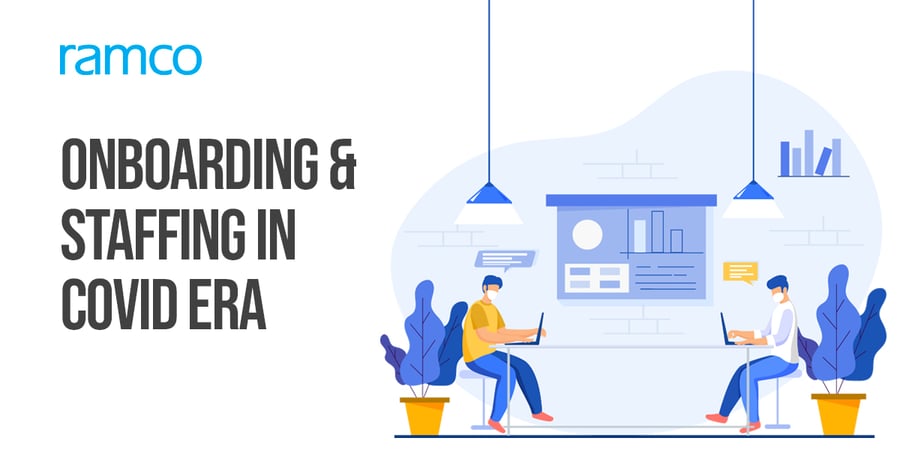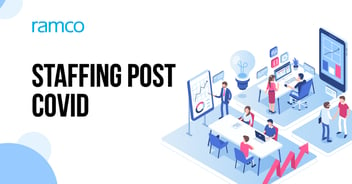

As the world is coming to terms with the new norm in the COVID-19 era, businesses and organizations are rolling back pay cuts and layoffs. Many organizations have begun strategic hiring to stay ahead of the curve. In this evolving environment, hiring managers and recruiters have to quickly adapt to new, efficient methods to attract the right talent.
Now more than ever, HR processes are relying on technological systems and processes. From the screening process, offer management, onboarding, contracting to payroll, the HR have to deal with an international and much more diverse workforce.
Interviewing and assessment
Virtual recruiting brings with it many challenges in terms of assessment and onboarding because of the diverse nature of the workforce. Vendors, part-time employees, remote candidates from around the world and the contingent workforce have gained more importance, which only means that payroll systems and processes have to be more inclusive, efficient and comply with regional statutory compliance. Plus, Gen Z candidates are actively seeking employment at tech savvy organizations. Some tips for conducting interviews include:
- Get organized. Make sure all parties have all the required equipment and software for the interview
- Send in the candidate resumes well in advance to the interviewers, share all their details and ensure they review all the information before the interview
- Have back up plans for technological challenges
- Follow professional etiquette and make sure the background is presentable, there’s enough light and do sound checks before the interview
- In case there is group discussion or interview, then the meeting software has options to collaborate online or offline, in the context of the interview
- Assign a host and a moderator for group interviews
- Set up more organized first round interviews by asking the candidate a set of prepared questions beforehand. In fact, you can encourage a response through a pre-recorded video and do one better by recording a video of all the questions you want to ask them
Digital channels and online job portals
Another trend here to stay is the current day LinkedIn profiles. Candidates are almost exclusively using online platforms to apply for jobs. It has become a go-to platform for many professionals to create and maintain their personal brands, actively engaging, upskilling and expanding their networks.
Yet another noteworthy development is the increase in the number of company job portals. Many corporations have upgraded their systems and gone over and beyond with their career pages. They are opting for integrated staffing solutions because reputable staffing solutions offer application tracking processes, real time tracking, faster and more efficient systems. Plus, they offer flexible analytics and reports addressing needs of various critical business dimensions.
New shortlisting models
Most organizations are using technology for just about 10% to 15% of their hiring process. But technological solutions can improve 70-80% of your hiring process. The number of applications per job has substantially increased, which means the key solution is digital platform. The manual hours in tracking and onboarding can be impractically high. As these are strategic hires, it’s important to be able to fill the positions sooner than later. And because organizations are able to hire world-class talent because it has never been easier to acquire a global workforce than it has ever been, you can face a very big competitive disadvantage if you get left behind.
Flexible, sophisticated systems are the smart way forward. Not only will it help you with compliance, you will be able to focus on finding the right fit. You will be able find the source of your leads, analyse the most successful platforms and begin to optimize your hiring. Immediate hires mean economies of scale for organizations looking to fill the positions and prove to be a blessing for candidates actively seeking jobs. This is also vital to establishing company culture and a starting point to fill the gap of personal touch, that remote hiring poses.
When the hiring process and assessment models are in order, HR professionals can shift their focus to candidate experience and quality hires.
Streamlining Payroll Services for a Remote Workforce
As businesses continue to adapt to the evolving landscape of work, managing payroll has become increasingly complex—especially with a global, remote, and diverse workforce. With the rise of virtual recruitment, remote hires, and part-time employees from around the world, organizations must rely on efficient payroll services that can handle these new challenges. Ensuring compliance with varying regional statutory regulations, managing cross-border payments, and seamlessly integrating payroll systems into HR and recruitment processes has never been more critical.
A well-integrated payroll solution can simplify these tasks by automating payroll processing, tax calculations, and benefits management, all while ensuring compliance with country-specific labor laws. Payroll services can also provide employees with secure access to their payroll information anytime and from anywhere, which is key to enhancing the remote work experience.
By leveraging advanced payroll services, businesses can not only guarantee the accuracy and efficiency of their payroll processing but also improve the overall employee experience. This is crucial for retaining top talent, particularly in the competitive global job market. In today's increasingly digital workforce, robust payroll services are essential for companies looking to stay compliant, reduce errors, and ensure that employees are paid correctly and on time, wherever they are located.
Trends to observe
- Ensure that training is done diligently with a proper induction and more frequent one-on-one progress checks. This can also help you determine probation periods and help build mutual trust. Plus, it gives the potential employees freedom and opportunity to be sure before they get into a legally complex and binding agreement.
- Include and encourage virtual team tea / coffee breaks as it gives new hires a chance to get to know their team members better, in a more candid and relaxed environment.
But most importantly leverage on technology and collaboration tools. Apart from helping you overcome remote hiring challenges, it will optimize your hiring consistently, in objective ways.
When done right, a technology driven approach can prove to be very useful in the long term, enable a more personalized experience to the candidate, even in terms of being an inclusive organization. And eventually, lead to better performing teams.
Related Posts


